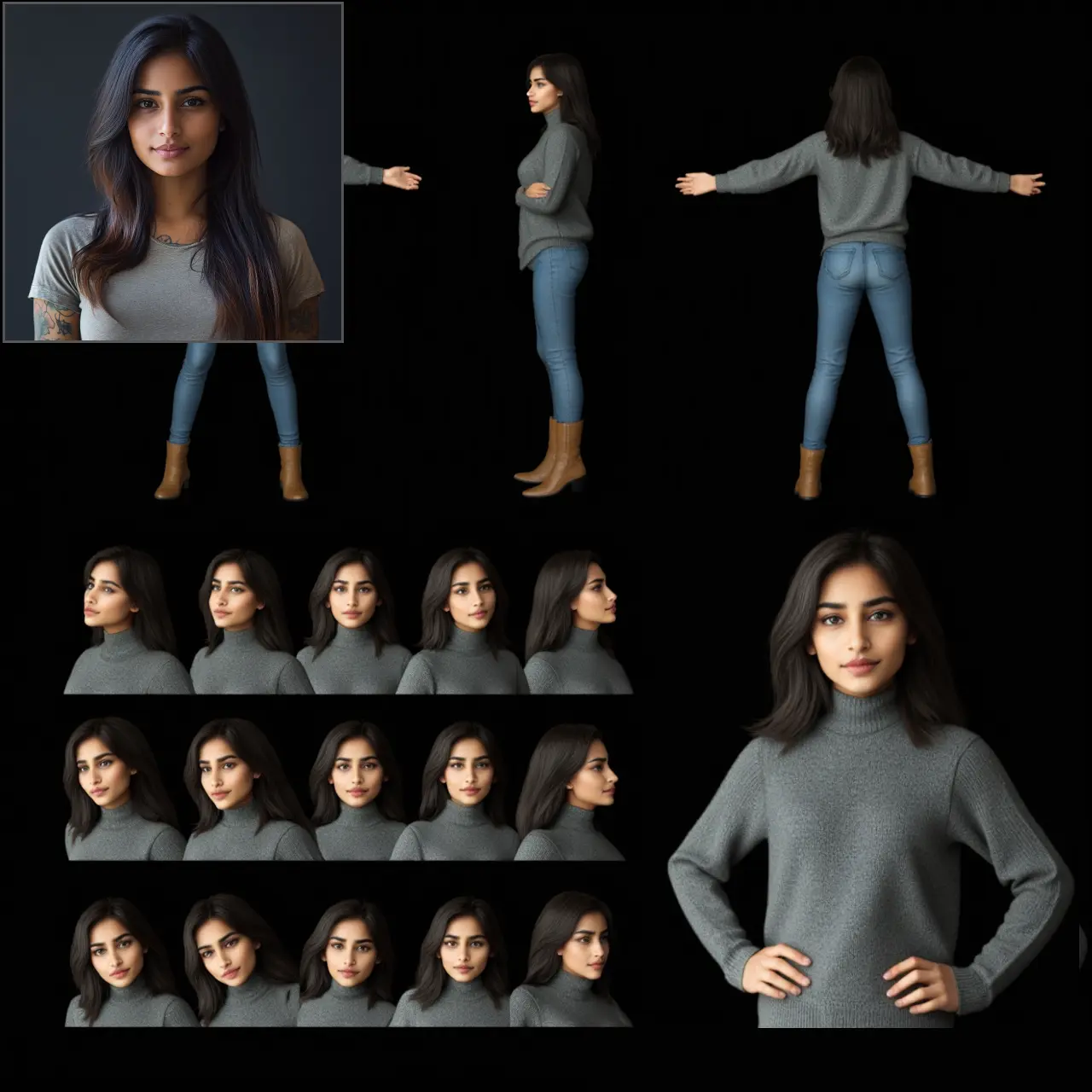ComfyUI Node: Runtime44 Mask Sampler
Runtime44MaskSampler
Categorysampling
runtime44 (Account age: 452days) Extension
Runtime44 ComfyUI Nodes Latest Updated
2024-07-01 Github Stars
0.04K
How to Install Runtime44 ComfyUI Nodes
Install this extension via the ComfyUI Manager by searching for Runtime44 ComfyUI Nodes- 1. Click the Manager button in the main menu
- 2. Select Custom Nodes Manager button
- 3. Enter Runtime44 ComfyUI Nodes in the search bar
Visit ComfyUI Online for ready-to-use ComfyUI environment
- Free trial available
- 16GB VRAM to 80GB VRAM GPU machines
- 400+ preloaded models/nodes
- Freedom to upload custom models/nodes
- 200+ ready-to-run workflows
- 100% private workspace with up to 200GB storage
- Dedicated Support
Runtime44 Mask Sampler Description
Enhances image sampling with masks for precise control in AI art generation.
Runtime44 Mask Sampler:
The Runtime44MaskSampler is a specialized node designed to enhance the sampling process by incorporating a mask. This node is particularly useful for AI artists who want to apply specific conditions or constraints to their generated images. By using a mask, you can control which parts of the image are influenced by the sampling process, allowing for more precise and targeted modifications. The primary function of this node is to apply a mask to the latent space during the sampling process, which can help in achieving more refined and controlled outputs. This is especially beneficial when working with complex models and conditioning inputs, as it allows for greater flexibility and creativity in the image generation process.
Runtime44 Mask Sampler Input Parameters:
model
This parameter specifies the model to be used for the sampling process. It is essential as it defines the architecture and weights that will influence the generated output. The model parameter ensures that the sampling process is aligned with the specific characteristics and capabilities of the chosen model.
positive
This parameter represents the positive conditioning input, which guides the model towards desired features in the generated image. It helps in emphasizing certain aspects or characteristics that you want to be prominent in the final output.
negative
The negative conditioning input serves as a counterbalance to the positive input, guiding the model away from undesired features. This helps in refining the output by suppressing unwanted characteristics, ensuring a more focused and accurate result.
latent
The latent parameter is the initial latent space representation that will be modified during the sampling process. It serves as the starting point for the generation, and the mask will be applied to this latent space to control the areas influenced by the sampling.
mask
This parameter is a tensor representing the mask to be applied during the sampling process. The mask defines which parts of the latent space will be affected, allowing for targeted modifications. It is crucial for achieving precise control over the generated output.
seed
The seed parameter is an integer value used to initialize the random number generator for the sampling process. It ensures reproducibility of the results. The default value is 0, with a minimum of 0 and a maximum of 0xFFFFFFFFFFFFFFFF.
steps
This parameter defines the number of steps to be taken during the sampling process. More steps generally lead to higher quality outputs but require more computational resources. The default value is 20, with a minimum of 1 and a maximum of 10000.
cfg
The cfg (classifier-free guidance) parameter is a float value that controls the strength of the guidance applied during sampling. Higher values result in stronger guidance. The default value is 8.0, with a range from 0.0 to 100.0, adjustable in steps of 0.1.
sampler_name
This parameter specifies the name of the sampler to be used. It determines the algorithm that will guide the sampling process, affecting the style and characteristics of the generated output.
scheduler
The scheduler parameter defines the scheduling strategy for the sampling process. It influences how the steps are distributed and can affect the convergence and quality of the final output.
denoise
This float parameter controls the amount of denoising applied during the sampling process. It helps in reducing noise and artifacts in the generated image. The default value is 1.0, with a range from 0.0 to 1.0, adjustable in steps of 0.01.
mask_feather
The mask_feather parameter is an integer that defines the amount of feathering (blurring) applied to the mask edges. This helps in creating smooth transitions between masked and unmasked areas. The default value is 13, with a range from 0 to 10000.
mask_dilation
This integer parameter controls the dilation of the mask, which can expand or contract the masked areas. It helps in adjusting the influence of the mask on the latent space. The default value is 0, with a range from -10000 to 10000.
Runtime44 Mask Sampler Output Parameters:
LATENT
The output parameter is a modified latent space representation that has been influenced by the mask and the sampling process. This latent space can be further processed or decoded to generate the final image. The output reflects the targeted modifications specified by the mask, resulting in a more controlled and refined image generation.
Runtime44 Mask Sampler Usage Tips:
- Experiment with different mask shapes and sizes to see how they influence the generated output. This can help you achieve more precise control over specific areas of the image.
- Adjust the
cfgparameter to find the right balance between guidance strength and creative freedom. Higher values can lead to more accurate results, while lower values allow for more variability. - Use the
mask_featherparameter to create smooth transitions between masked and unmasked areas, which can help in achieving more natural-looking results.
Runtime44 Mask Sampler Common Errors and Solutions:
"Invalid mask tensor shape"
- Explanation: The mask tensor provided does not have the expected shape.
- Solution: Ensure that the mask tensor matches the dimensions required by the model and the latent space.
"Seed value out of range"
- Explanation: The seed value provided is outside the acceptable range.
- Solution: Ensure that the seed value is between 0 and 0xFFFFFFFFFFFFFFFF.
"Steps value out of range"
- Explanation: The number of steps specified is outside the acceptable range.
- Solution: Ensure that the steps value is between 1 and 10000.
"CFG value out of range"
- Explanation: The cfg value provided is outside the acceptable range.
- Solution: Ensure that the cfg value is between 0.0 and 100.0.
"Denoise value out of range"
- Explanation: The denoise value provided is outside the acceptable range.
- Solution: Ensure that the denoise value is between 0.0 and 1.0.
Runtime44 Mask Sampler Related Nodes
RunComfy is the premier ComfyUI platform, offering ComfyUI online environment and services, along with ComfyUI workflows featuring stunning visuals. RunComfy also provides AI Models, enabling artists to harness the latest AI tools to create incredible art.


